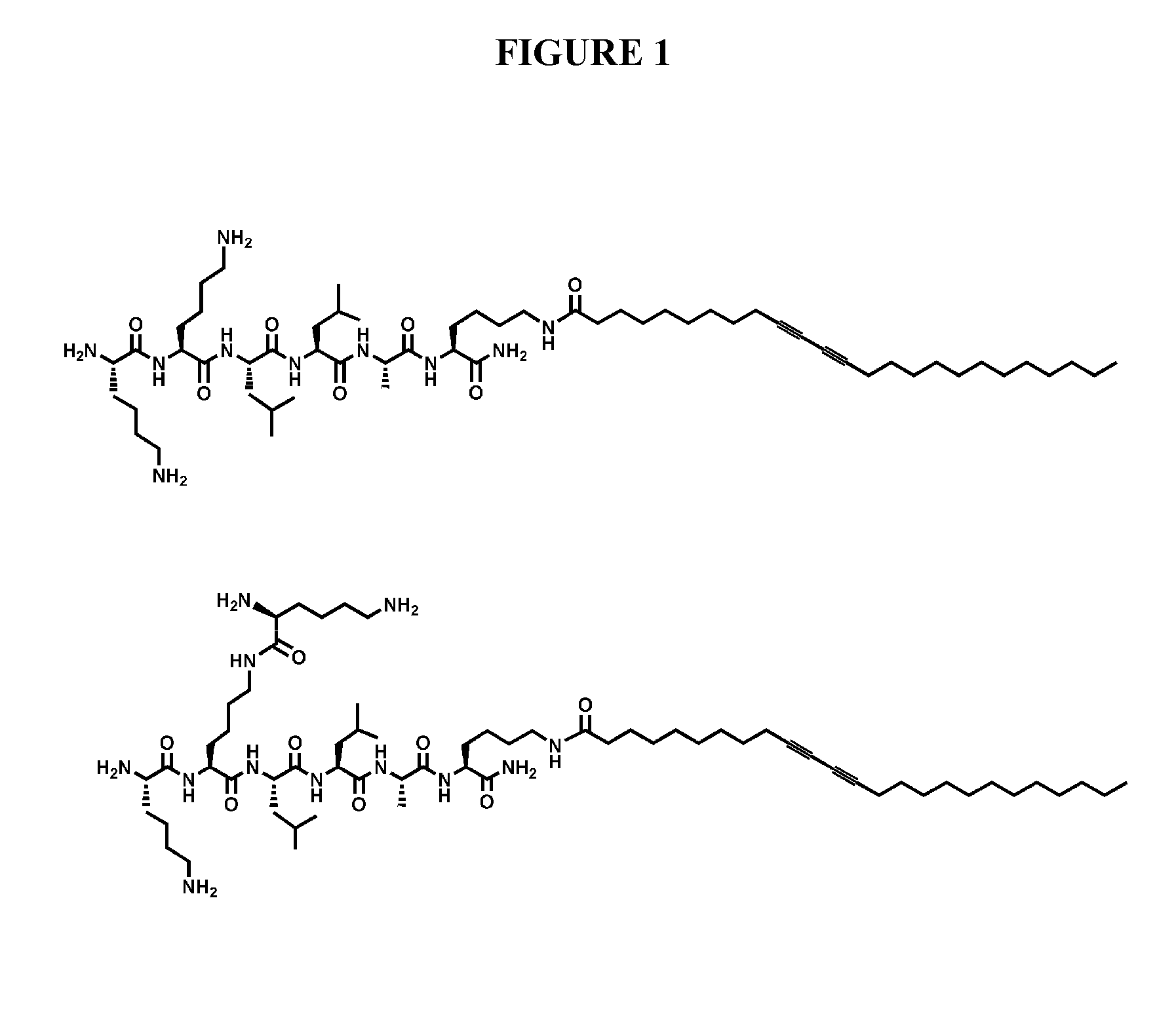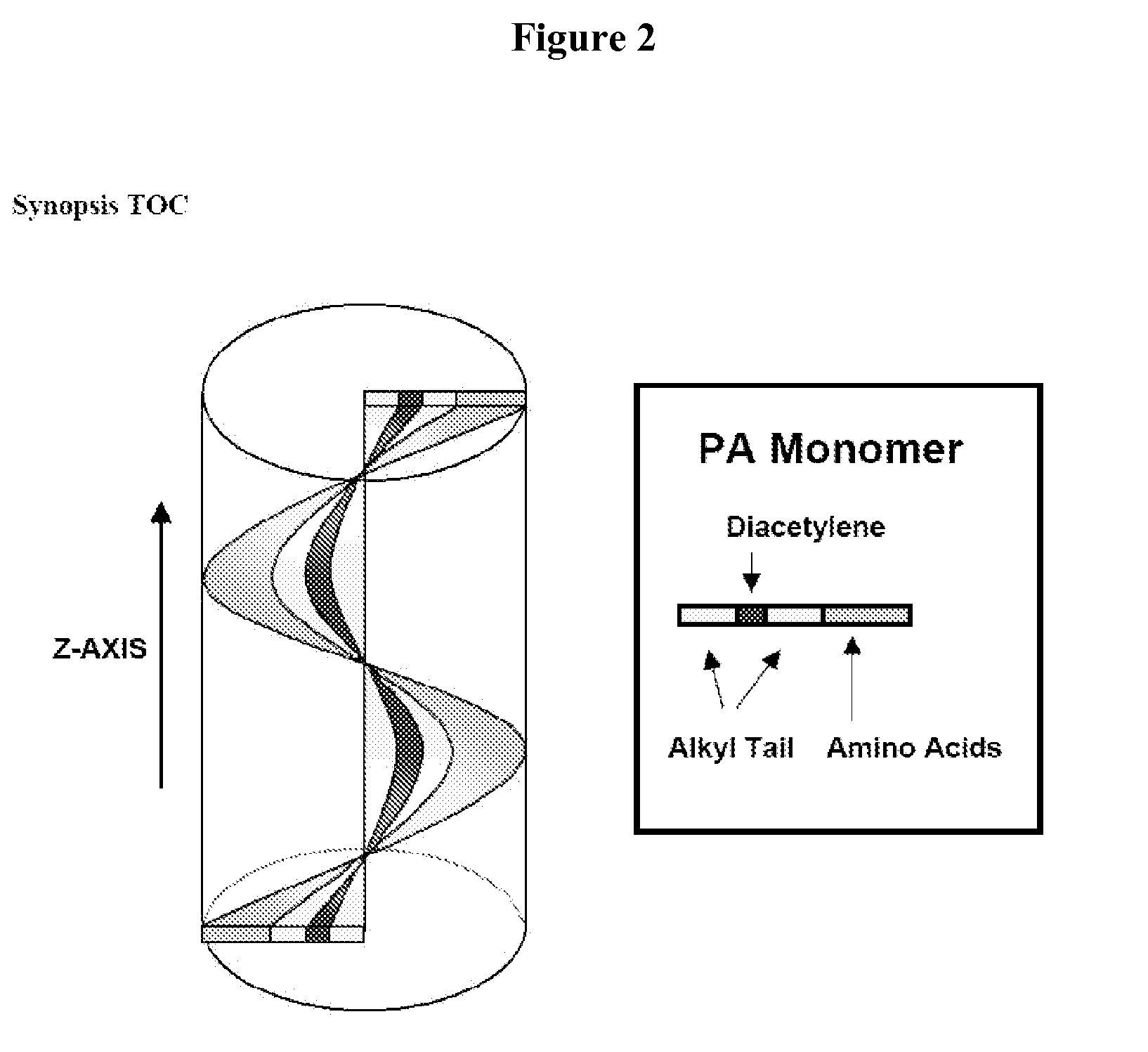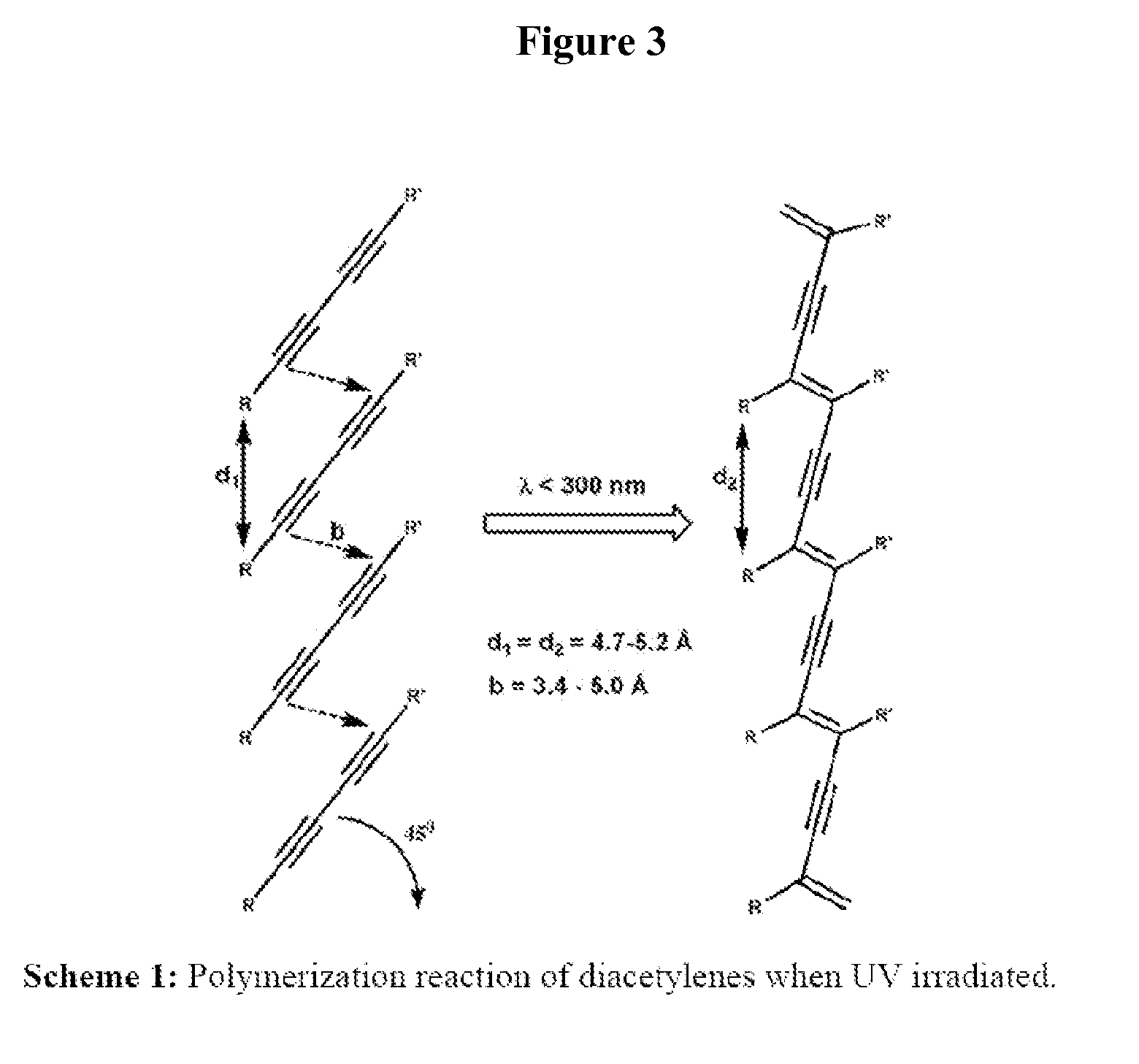Self-assembling peptide amphiphiles
a technology of peptides and amphiphiles, which is applied in the direction of peptide/protein ingredients, antibacterial agents, prosthesis, etc., can solve the problems of difficult delivery of scaffolds to the surgical location
- Summary
- Abstract
- Description
- Claims
- Application Information
AI Technical Summary
Problems solved by technology
Method used
Image
Examples
example 1
Experimental Section
[0056]Peptide Amphiphile Synthesis. All amino acids and Rink MBHA resin were purchased from Novabiochem Corporation (San Diego, Calif.). 10,12-Pentacosadiynoic acid was purchased from Fluka and Alfa Aesar. n-Pentacosanoic acid was supplied by TCI America, Inc. All other reagents and solvents for peptide synthesis were purchased from Aldrich or Mallinckrodt and used as provided. Peptide amphiphiles were manually synthesized by Fmoc solid phase peptide synthesis. After the first attachment of a lysine residue (Fmoc-Lys(Mtt)-OH) on to the resin, the coupling of the pentacosadiynoic acid on to the ε-amine occurred after cleaving the Mtt group with 5% TFA cocktail solution (TFA, TIPS, and water of 95:2.5:2.5) and dichloromethane. All other residues followed standard Fmoc chemistry. The PAs were cleaved from the resin using a cocktail comprised of TFA, TIPS, and water (95:2.5:2.5). Compound purity was analyzed by an analytical reverse-phase high performance liquid chro...
PUM
| Property | Measurement | Unit |
|---|---|---|
| diameter | aaaaa | aaaaa |
| wavelength | aaaaa | aaaaa |
| particle size | aaaaa | aaaaa |
Abstract
Description
Claims
Application Information
 Login to View More
Login to View More - R&D
- Intellectual Property
- Life Sciences
- Materials
- Tech Scout
- Unparalleled Data Quality
- Higher Quality Content
- 60% Fewer Hallucinations
Browse by: Latest US Patents, China's latest patents, Technical Efficacy Thesaurus, Application Domain, Technology Topic, Popular Technical Reports.
© 2025 PatSnap. All rights reserved.Legal|Privacy policy|Modern Slavery Act Transparency Statement|Sitemap|About US| Contact US: help@patsnap.com



